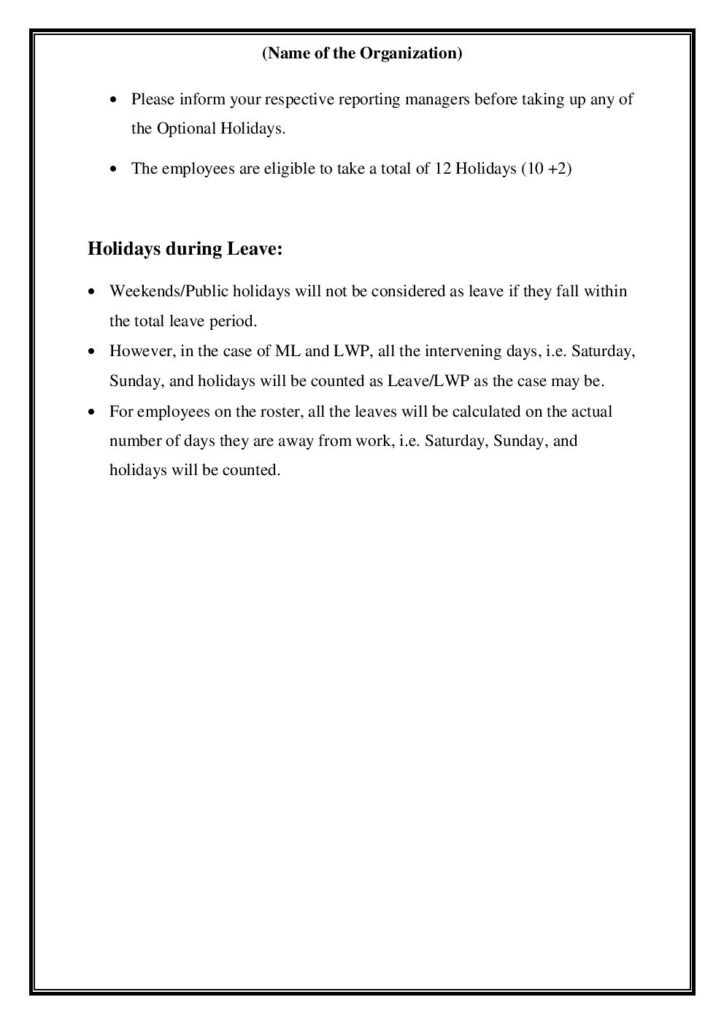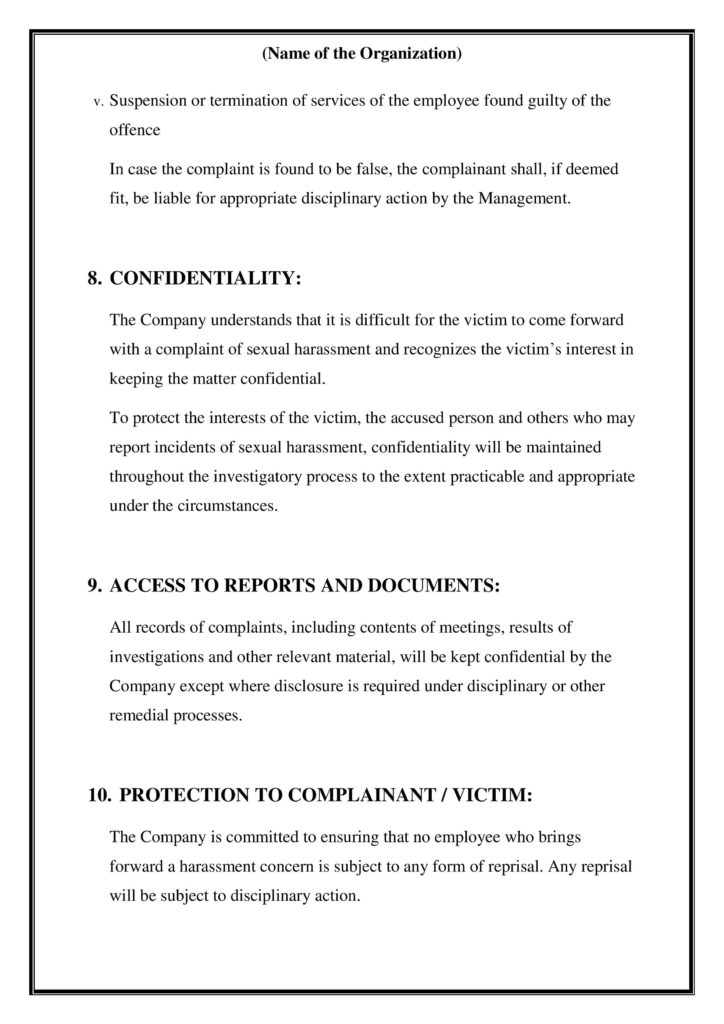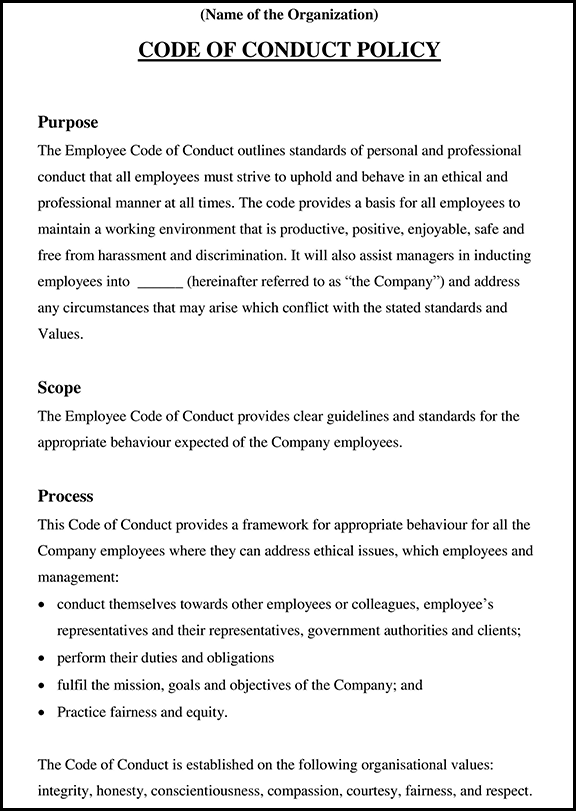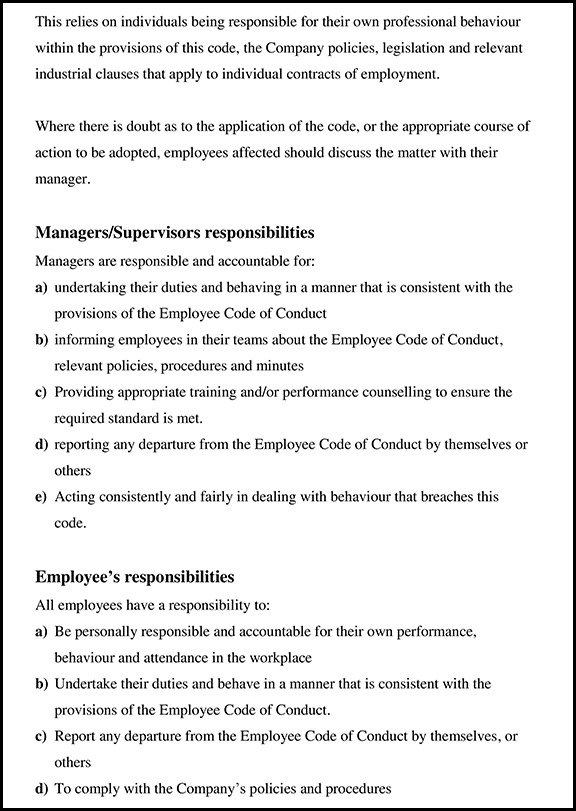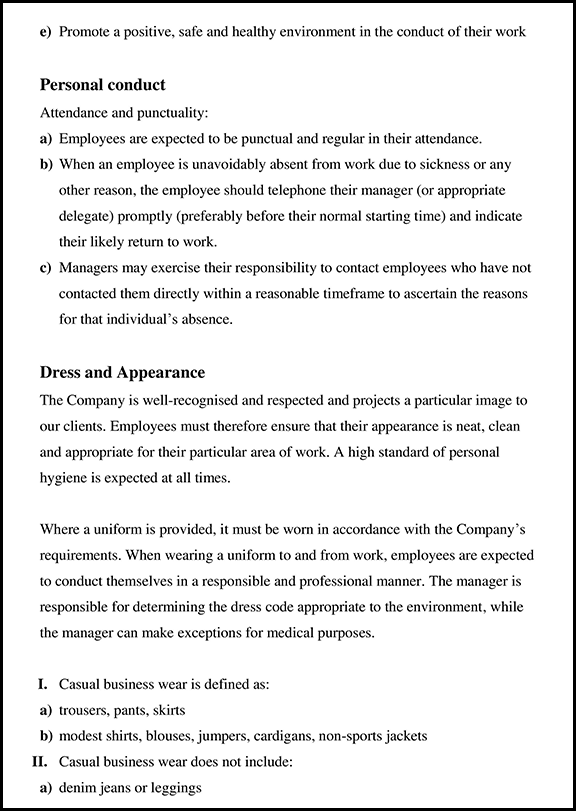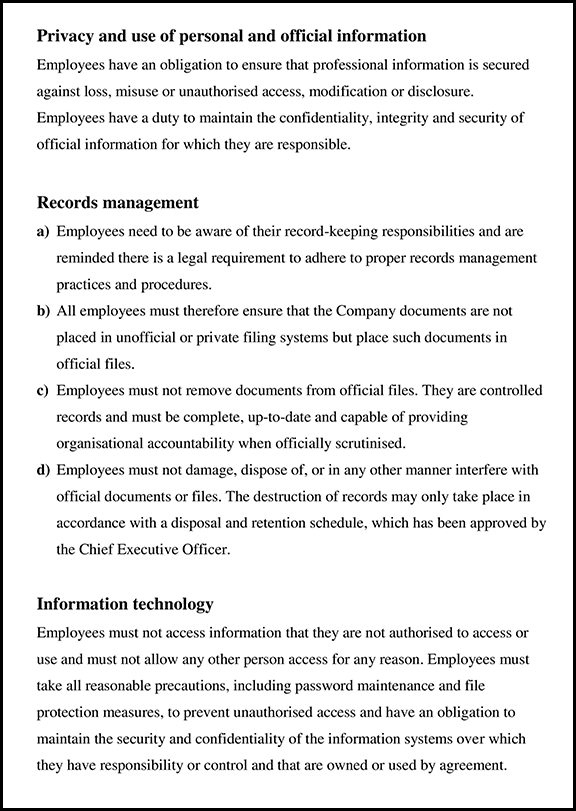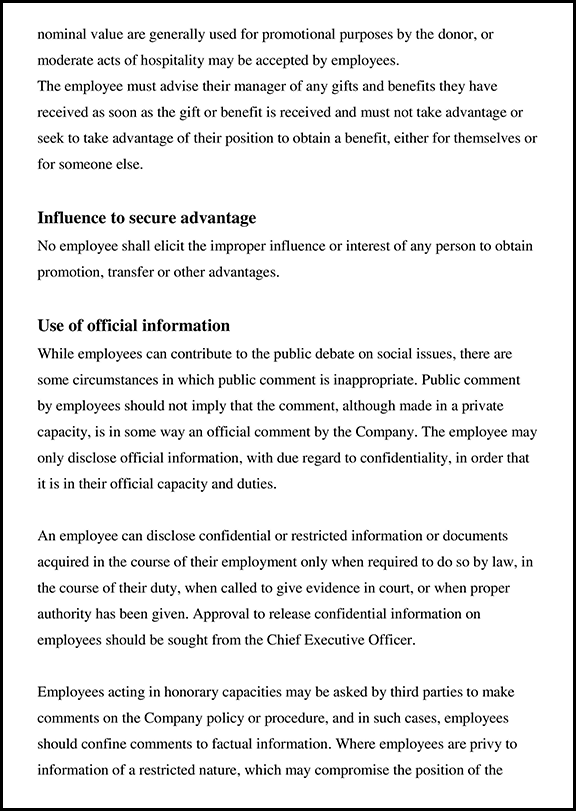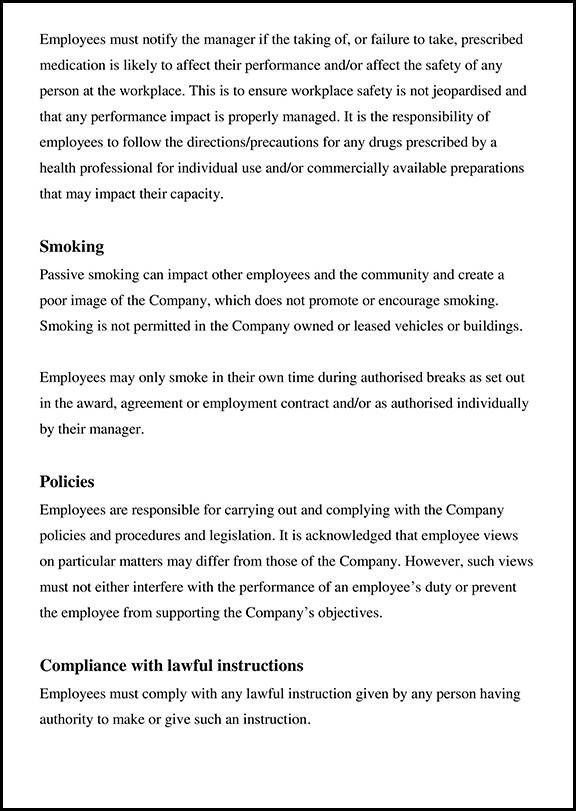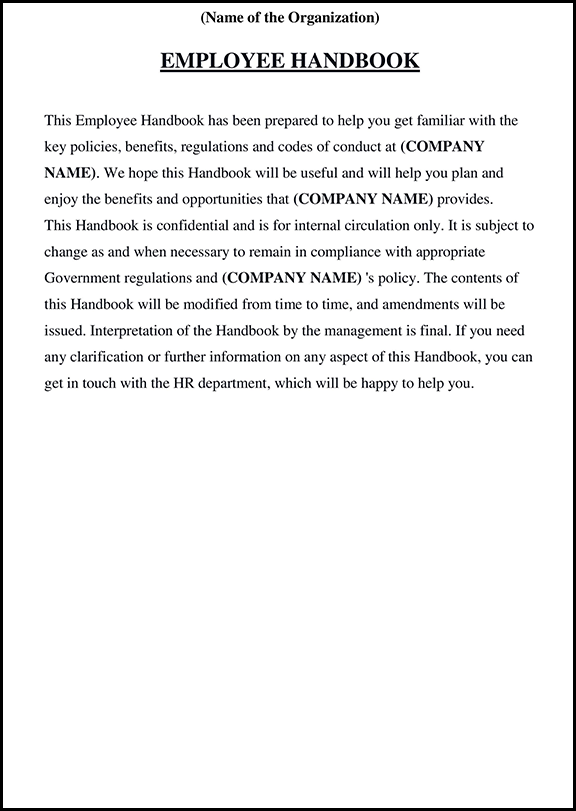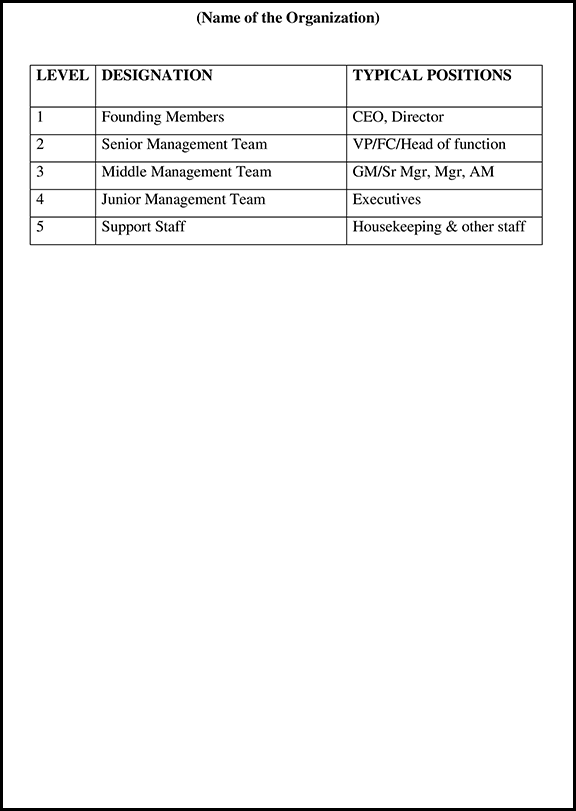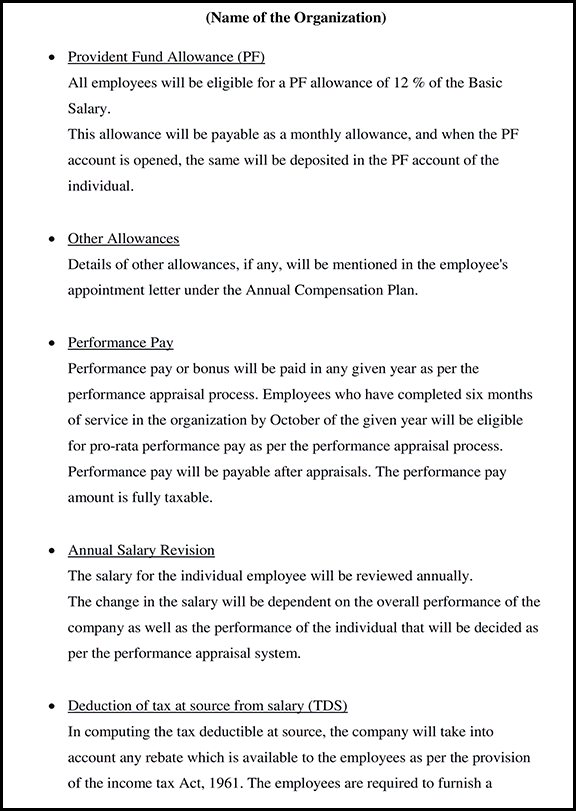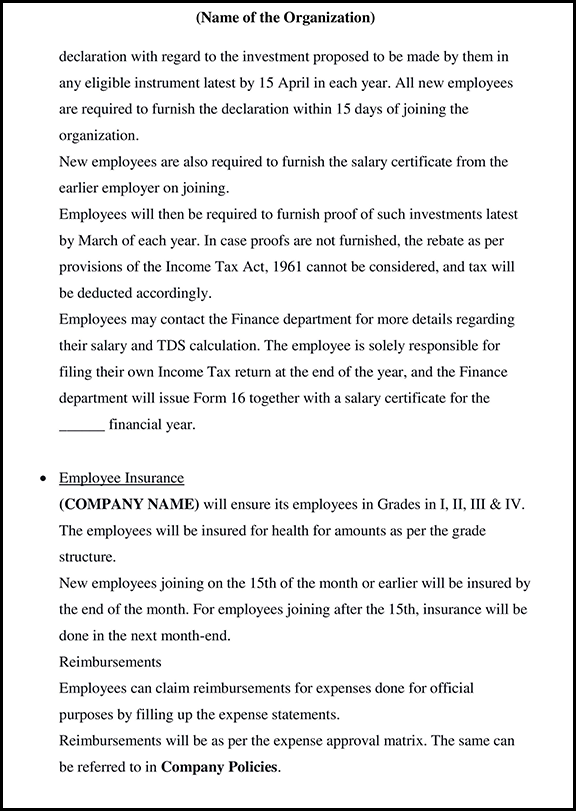
Employee Code of Conduct Policy
Employee Code of Conduct
What is Employee Code of Conduct Policy?
An Employee Code of Conduct Policy is a set of principles that guides how employees of an organization should conduct themselves on a daily basis. It reflects an organization’s core beliefs, values, and its overall culture. Each organization has a unique set of policies and procedures that are suited to its particular goals and requirements.
Integrity is a crucial part of any Employee Code of Conduct Policy. It serves to protects the team, clients, and company but also enhances overall business performance. Upholding ethical practices is a top priority for every organization, even while promoting freedom of expression and open communication among employees. The Code of Conduct ensures that all employees are aware of and adhere to these ethical standards, thus creating a positive and productive work environment.
Employee Code of Conduct Policy Includes
1. Compliance with Law
We are compliant with municipal, national, regional, etc., laws that are applicable to our business. The legal compliances of the Company must be done by all of our employees and those operating on our behalf. All environmental, safety and fair, as well as ethical trade practices, must be followed.
Hefty monetary penalties, imprisonment, tarnishing of goodwill, damage to our business connections, etc. are some of the consequences of breaking the law.
2. Dress and Appearance
Here are some guidelines for maintaining a professional appearance:
- Personal Presentation: All employees must present themselves neatly and cleanly, adhering to basic grooming standards.
- Appropriate Attire: Select clothing that reflects our workplace’s professional image. Avoid overly casual or revealing outfits.
- Clothing Care: Make sure that your clothes are clean, well-maintained, and free from visible damage.
- Respectful Appearance: Tattoos, piercings, and other personal adornments should be tasteful and non-offensive.
- Enforcement: Supervisors are responsible for ensuring compliance with these guidelines, fostering a professional and respectful workplace culture.
3. Responsibilities and Behavior
Each employee is personally accountable for their performance, behavior, and attendance in the workplace. Employees must fulfill their responsibilities in accordance with company policies and act in a manner consistent with our values.
4. Conflict Of Interest
You shall not have entered into any other agreement or arrangement that would conflict with the terms & conditions of your employment with the Company or prevent you from fully performing your job responsibilities for the Company.
5. Financial Interest
Employees must avoid financial gains or ventures that may directly or indirectly interfere with or impair the performance of their duties or the Company’s purposes or activities.
Essential Features that a Code of Conduct Represents
1. Promoting a Compliant Culture:
Employees are more comfortable working for companies with well-defined policies, as it aids in the resolution of workplace issues and disputes.
2. Defining Company Image
A code of conduct represents the company’s image and sends the public a clear message about its values and principles.
3. Ensuring Legal Compliance
The policy ensures that the company complies with its own policies and legal requirements, specifically addressing issues such as sexual harassment and discrimination.
4. Manager and Employee Responsibility
Employees should complete their job responsibilities with workplace ethics and respect toward their customers, employees, and the company. Managers and supervisors should consider the amount of work they give to the employees following their capacity.
Use Case of Employee Code of Conduct
1. Expected Behavior and Ethical Code of the Company:
A set of rules and workplace ethics must be followed on the workplace premises. breaking these ethical codes hampers the company’s image, creates an unsettling environment, and more. Some ethical codes of conduct that need to be followed are Company loyalty, Social Responsibility, and Use of company resources.
2. Conflict:
Conflict of interest is when a situation affects both the company and the employee. If, as an employee, you know about a brimming conflict then it’s your responsibility to immediately inform your manager and supervisor before it reaches a point that is harmful to the company.
3. Acceptance of Commissions, Gifts, or Benefits:
if an employee accepts gifts, benefits, or commissions in return for a favor that damages the company, they will be breaching the employee code of conduct in the workplace.
4. Manager and Employee Responsibility:
Employees should complete their job responsibilities with ethics and respect toward their customers, employees, and the company. Managers and supervisors should consider the amount of work they give to the employees following their capacity.
5. Record Management
under record management, there should be separate standard operating procedures for different departments. The employees should be aware of all necessary records he needs to [provide and adhere towards. The record managers should create and keep safe all written documents related to employees and the companies like policies, letters, records and more.
Employee Code of Conduct Template Word
1. Introduction
- Purpose of the policy
- Scope and applicability
- Statement of commitment to ethical conduct
2. General Conduct
- Professionalism and ethical behavior
- Compliance with laws and regulations
- Conflict of interest
- Use of company resources
- Protection of company assets
3. Workplace Relationships
- Respectful and inclusive behavior
- Non-discrimination and equal opportunity
- Harassment and bullying prevention
- Privacy and confidentiality
4. Communication and Technology Usage
- Respectful and effective communication
- Proper use of company communication channels
- Email and Internet usage guidelines
- Social media guidelines
5. Confidentiality and Data Protection
- Handling of confidential information
- Protection of sensitive data
- Intellectual property rights
6. Health, Safety, and Environmental Responsibility
- Commitment to a safe and healthy workplace
- Employee responsibilities for maintaining safety
- Sustainable practices and reducing environmental impact
7. Compliance and Reporting
- Compliance with laws, regulations, and policies
- Reporting violations or concerns
- Whistleblower protection
8. Consequences of Violations
- Disciplinary actions for code of conduct violations
- Procedures for investigation and resolution
9. Policy Review and Updates
- Regular review and updates of the HR code of conduct policy
- Communication of policy changes to employees
Download Full Version
Created by India’s top HR experts

Just Rs. 999 Rs. 499
How To Use?
Fill In The Blanks
 Customize Template
Customize Template
 Save, Print, Done.
Save, Print, Done.
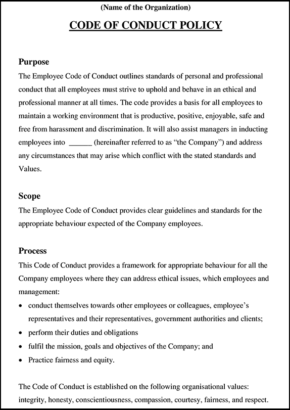
Download SOP For HR Department.
→ Editable in MS Word & Google Docs
→ Full Version
→ Created by India’s Top HR Experts
→ Used by HR professionals at Dream11, Razorpay, Mamaerath & more
Rs. 999 Rs. 499
Download StartupHR Toolkit Instantly & Access Largest Collection HR Documents.
The only Toolkit to solve all your HR problems in minutes.
Legally compliant and govt approved HR documents.
24×7 customer support over chat & calls (during daytime).
FREE HR audit.
Up to date documents as per the latest Statutory Law.
3 FREE customized documents with Gold Plan.
Expert HR guidance.
Recent Post
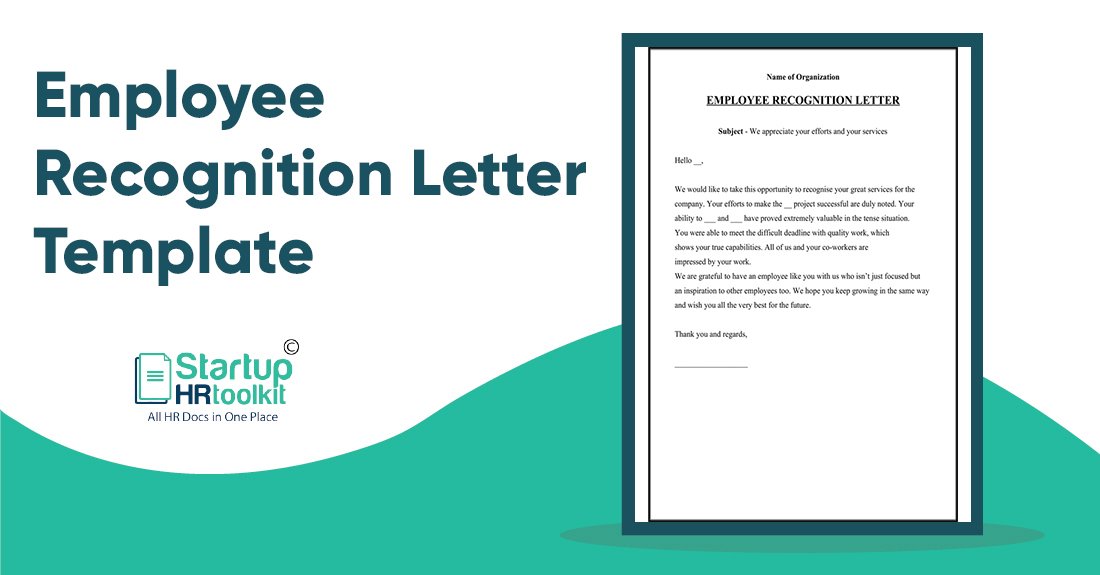
Employee Recognition Letter
An employee recognition letter is a means for employers to thank and appreciate employees for all their hard work and dedication. This letter aims to show and appreciate them for putting in a lot of effort in their job. It motivates them to work harder and achieve all their targets.

Employee Termination Letter Format
Employee termination letter format: 1. Dear____, Subject: Your job will end Hello, This letter is in reference to your employment with _____.

Social Media Policy for Employees
Social media policy is a document that explains the rules and regulations while using social media. Companies maintain a social media policy to outline the guidelines for what is to be shared on social media and what is prohibited from sharing by employees
Join a Community of 1,00,000+ HR Professionals

















